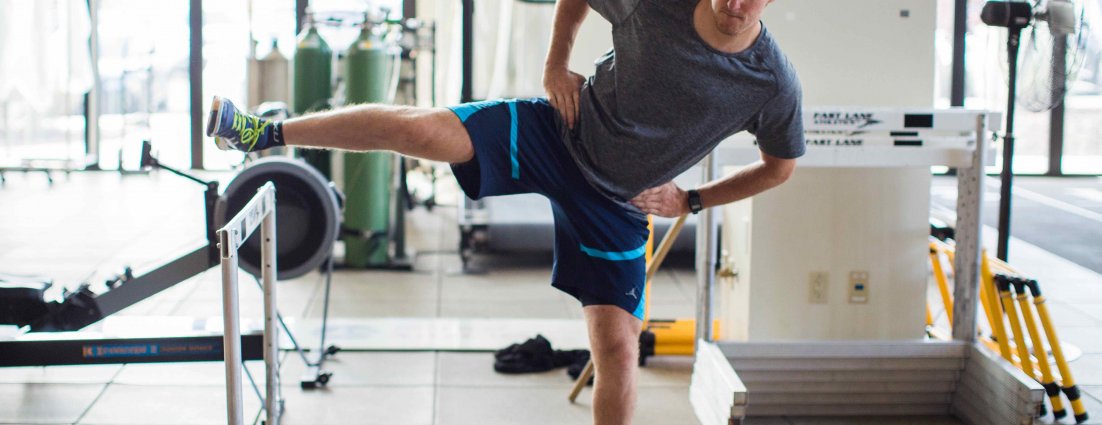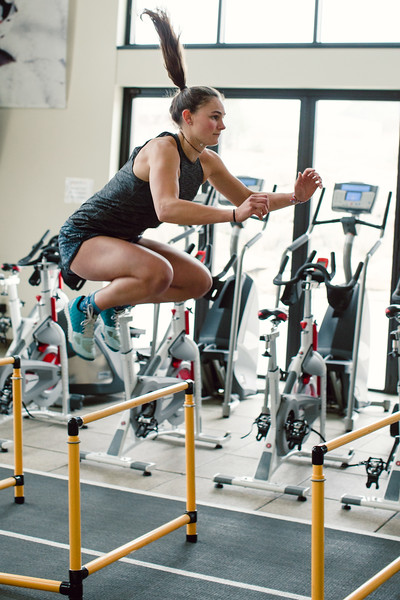Mid-Season Maintenance
01.23.2017 | Ski Racing Staff

By Edie Thys Morgan
As we settle in to the icy clutch of January, it’s time to ask how those resolutions are going. Yeah, those. If you’re still in search of a commitment-worthy resolution, I’ve got you covered. It’s not original or fun, and it won’t lead to anything new or exciting. All you’ll have to show for sticking to it is being the same at the end of the season as you were at the beginning of the season. But I assure you, as a ski racer that’s a huge accomplishment.

It’s called a maintenance program. Here’s how life in ski racing (or any sport for that matter) progresses. You get into it because it’s fun. You stay in it because you like it or you’re good at it or, hopefully, both. It all comes easily and naturally until you get good enough that you have to start working in the off-season to compete effectively and safely.
In alpine skiing — versus more grueling pursuits such as nordic skiing or swimming — you have to be incredibly strong, fit and agile to do it well, but skiing in itself doesn’t actually keep you in the kind of peak condition you need to succeed or even to survive intact.
The solution is an in-season maintenance program that involves both warming up before training and racing; and regular post-training dryland sessions. It’s not about making gains, but about maintaining the strength we worked so hard to build, so that when we get to spring we’re not an aching pile of mush.
In-season training starts to matter at around the age of 14. I clearly remember, at around age 11, when a friend and competitor who was two years older than me stayed with our family for a race. By the time I woke up she was in her “training suit,” stretching after a warm-up jog. She hadn’t done much, but in merely having a routine, she had drawn a clear line in the sand. I was a kid and she was an athlete.
I’d like to say that moment inspired me to start training, but it didn’t. A couple of years later a coach wrangled a sponsor for team training suits. This, I hate to admit, was probably key. Every time I put on that training suit I felt cool and official and part of something important. Then our coach implemented a training routine that we completed every day after skiing. It’s hazy now, but I know it involved 400 rope jumps, 100 squat jumps, push-ups, sit-ups and some quickness drills. The rest of the routine varied daily based on our on-hill training, but the core “habit” remained the same, and took me across that line in the sand. It made me “an athlete,” at least in my own head.
The challenge for coaches and parents is getting kids to buy into a maintenance program. Yes, ultimately the motivation has to come from the kid, but they’re, you know, kids — all about enjoying the journey. Even if they happen to know where they want to end up, they need directions along the way.
The first step is creating a routine. Routines take the stress of deliberation out of the equation — this is just what you do. Boom!
My kids recently trained with the Jackson Hole Ski Team. Before even meeting the team, I was impressed by their division’s maintenance program posted on the team’s website. Their coach Jonathan Souter says he isn’t sure how many of his kids actually adhere to the program, but he knows they use it as a reference throughout the season. What’s easier for Souter to see is the universal participation in and benefit from their pre-training warm-up in the parking lot and lodge.
“The daily group warm-ups have really helped engage the kids in their body health awareness,” he says. “I notice the difference in my own performance, and I’ve noticed it in the athletes’ performance, especially on the first few runs of training.”
In the bigger picture, Souter sees that the routine puts the athletes in a mindset of athletic preparation before skiing. “It definitely takes some nagging to get them to do it in the beginning of the season,” he says, “but by the end it becomes part of the routine, and I think the kids see the value in it and take some ownership over it.”
When it comes to motivating kids for dryland training, Doug Lewis is the master. Literally hundreds of kids over the years (mine included) learn to embrace suffering at his ELITEAM camps. Doug maintains that the most reliable way to motivate kids is by connecting the dots between increased strength, fitness and mobility and going faster on skis. “That’s what it was all about for me,” he says. “I wanted to win races, so I was willing to do anything to achieve that goal.”
Even if you can’t quite sell the concept of an in-season dryland regimen to U14s, there are ways to sneak it into winter training. One tried and true way is through endurance runs. “Take kids to the top of the longest run on your hill,” suggests Lewis, “and tell them to make short, crisp slalom turns from top to bottom without stopping. Then see if they can still walk!”
Doug’s more creative suggestions include having kids run a long giant slalom course five times, then asking them to sing the national anthem without passing out; working a group down the hill relay-style, alternating between tuck routines and slalom turns; and having kids try to get themselves into a Ted Ligety GS position to understand the strength and flexibility it requires.
Be creative and be patient. Kids will take to this in their own time. If it takes a little longer for some, it doesn’t mean they’re lazy or unmotivated or don’t “have what it takes.” It just means they aren’t there quite yet. If it matters to them, they’ll get there, because soon enough nothing will work unless they do. Your only job is to show them the strategies and, best yet, lead by example.